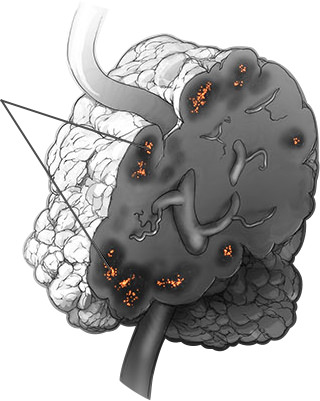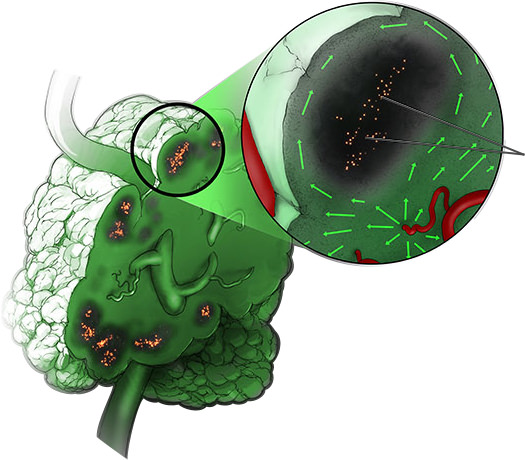uHAPs reach hypoxic cancer cells
OncoTherics’ anti-Hypoxia (uHAP) technology has been designed specifically to target hypoxia resistant cancer cells.
These so-called uHAPs are non-toxic to normal cells and are highly penetrative, rapidly passing through all cells in the body including the hypoxic micro-environments of tumours.
In this way, uHAPs are uniquely able to reach areas of the tumour that have been previously inaccessible to conventional chemotherapy and radiotherapy.
The combination of Oncotherics' uHAPs alongside conventional chemotherapy and radiotherapy, now presents an exciting opportunity to treat the whole tumour.
Further, due to their non-toxic nature, the addition of a uHAP to existing treatment regimens is unlikely to add to the burden of side effects commonly experienced with conventional chemotherapy and radiotherapy.




